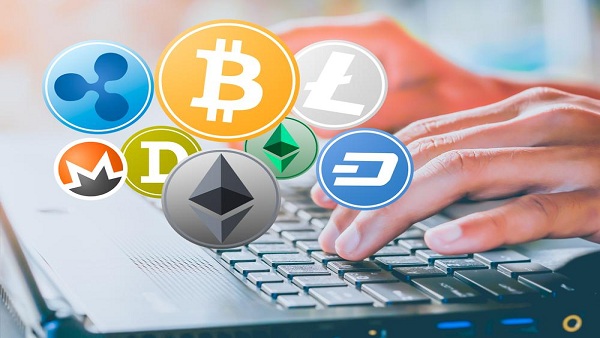To qualify as a Maharatna PSU, a CPSE must meet the following criteria: –
1. Navratna status should already be in place.
2. Listed on the Indian stock exchange with a minimum public shareholding requirement set by SEBI regulations.
3. Sales/turnover of more than Rs. 20,000 crore on an annual basis for the previous three years
4. A net worth of greater than Rs.10,000 crore on an annual basis for the past three years.
5. In the last three years, the company has made an average yearly net profit of more than Rs. 2,500 crore.
6. International businesses or a significant global presence
Maharatna Company: Bharat Heavy Electricals Limited
BHEL is one of India’s leading engineering and industrial conglomerates. It works on a wide range of products and services, including design, engineering, construction, testing, and maintenance. It has more than 180 product offerings to fulfil the ever-increasing demands of the economy’s major sectors.
Only 2.33 percent of trading sessions in the last 16 years had intraday drops of more than 5%. The stock returned 1.78 percent over three years, compared to 92.25 percent for the Nifty Midcap 100. Since August 27, 2001, Bharat Heavy Electricals Ltd. has issued 35 dividends.
Bharat Petroleum Corporation Limited
Maharatna is a government-owned oil and gas firm based in Mumbai, Maharashtra. It is India’s second-largest downstream oil company and ranks 342nd on Fortune’s list of the world’s largest corporations as of 2016. In Forbes’ 2018 list, BPCL was rated 672nd. After the ongoing up-gradation and expansion at several refineries are completed, the gross refining margins have the potential to improve.
In FY-20, BPCL added 1,447 outlets to its broad network of rural and urban locations, bringing the total number of outlets to 16,234. It has the highest throughput per outlet among PSU oil companies, while there is still room for improvement through outlet rationalization.
Maharatna Company: Coal India Limited
Coal India Limited (CIL), a Maharatna corporation, is an Indian state-controlled coal mining business with headquarters in Kolkata, West Bengal, India, and is the world’s largest coal producer. CIL produces coal through seven completely owned subsidiaries. It owns and runs 413 mines in 82 mining districts throughout the country. Coal India Africana Limited (CIAL), a wholly-owned subsidiary of CIL in Mozambique, is seeking coal mining potential in that country.
Any re-rating of the company faces tremendous hurdles as fossil fuels and climate change become a key issue with global investors. The stock returned -38.06 percent over three years, compared to 76.81 percent for the Nifty 100. Over a three-year period, the stock returned -38.06 percent, while the Nifty Metal returned 71.76 percent to investors.
Maharatna Company: GAIL Limited
GAIL (India) Limited, a Maharatna PSU and India’s flagship Natural Gas firm, integrates all components of the Natural Gas value chain and related services in India.
The stock returned -13.14 percent over three years, compared to 76.81 percent for the Nifty 100. GAIL (India) Ltd., founded in 1984, is a Large Cap company in the Gas & Petroleum sector with a market capitalization of Rs 66,183.94 crore.
GAIL is attempting to usher in a new era of clean fuel industrialization by constructing a quadrilateral of green energy corridors connecting India’s major consumption centres to major gas fields, LNG terminals, and other cross-border gas sourcing sites.
Maharatna Company: HPCL
Hindustan Petroleum Corporation Limited
Hindustan Petroleum Corporation Limited is a subsidiary of Oil and Natural Gas Corporation, which is owned by the Government of India’s Ministry of Petroleum and Natural Gas and is headquartered in Mumbai, Maharashtra. The stock returned 43.39 percent over three years, compared to 76.81 percent for the Nifty 100. Hindustan Petroleum Corporation Ltd., founded in 1952, is a Large Cap firm in the Gas & Petroleum sector with a market capitalization of Rs 46,287.23 crore.
Since July 27, 2000, Hindustan Petroleum Corporation Ltd. has announced 32 dividends.
Hindustan Petroleum Corporation Ltd. has declared an equity dividend of Rs 22.75 per share in the last 12 months.
This equates to a dividend yield of 7.04 percent at the current share price of Rs 323.05.
Maharatna Company: Indian Oil Corporation Limited
Indian Oil Corporation Limited (IOCL) is an Indian state-owned oil and gas business with headquarters in New Delhi and a registered office in Mumbai. It’s usually referred to as Indian Oil. It is owned by the Ministry of Petroleum and Natural Gas of the Government of India, which is based in New Delhi. In the fiscal year ended March 31, 2021, the company delivered a ROE of 19.34 percent, surpassing its five-year average of 14.96 percent. Over a three-year period, the stock returned -5.23 percent, while Nifty Energy returned 78.38 percent to investors.
Since Aug. 27, 2001, Indian Oil Corporation Ltd. has declared 33 dividends. Indian Oil Corporation Ltd. declared an equity dividend of Rs 12.00 per share in the last year. This equates to a dividend yield of 9.16 percent at the current share price of Rs 131.00.
Maharatna Company: NTPC Limited
National Thermal Power Corporation Limited (NTPC) is a Maharatna company (public sector undertaking) that was established by the Indian government in 1975. The National Thermal Power Corporation (NTPC) is the world’s largest electric power generation corporation. With a total installed capacity of 63 GW, it is India’s only power major that generates electricity using coal, gas, liquid fuel, hydro, solar, nuclear, wind, and renewable energy.
The stock returned 8.4 percent over three years, compared to 76.81 percent for the Nifty 100. In comparison, the S&P BSE Power Index returned 8.4 percent during a three-year period, whereas the S&P 500 Index returned 78.92 percent. NTPC Ltd., founded in 1975, is a Large Cap firm in the Power sector with a market capitalization of Rs 140,456.21 crore.
Maharatna Company: Oil & Natural Gas Corporation Limited
One of India’s largest Maharatna enterprises is Oil & Natural Gas Corporation Limited (ONGC). The ONGC is India’s largest crude oil and natural gas company. It accounts for over 70% of Indian domestic output and is used by firms such as IOC, BPCL, and HPCL to make products such as gasoline, diesel, and cooking gas. Only 1.51 percent of trading sessions in the last 16 years saw intraday gains of more than 5%. The stock returned 6.32 percent over three years, compared to 76.81 percent for the Nifty 100.
Maharatna Company: Power Grid Corporation of India Limited
Power Grid Corporation of India Limited is an Indian statutory corporation that is governed by the Ministry of Power of the Indian government. With an 85% share of India’s ISTS (Inter-State Transmission System) and inter-regional power transfer capacity, the company is the largest power transmission company.
The stock returned 36.34 percent over three years, compared to 76.81 percent for the Nifty 100. Over a three-year period, the stock returned 36.34 percent, compared to 78.92 percent for the S&P BSE Power index.
Maharatna Company: Steel Authority of India Limited
Steel Authority of India Limited (SAIL) is India’s largest steel producer and one of the country’s seven Maharatna Central Public Sector Enterprises. Annual sales growth of 11.83 percent surpassed the company’s three-year CAGR of 6.4 percent. The stock returned 82.67 percent over three years, compared to 76.81 percent for the Nifty 100 index.
Disclaimer
Investing in equities poses a risk of financial losses. Investors must therefore exercise due caution. Greynium Information Technologies, the author, and the brokerage house are not liable for any losses caused as a result of decisions based on the article. This article is for educational purpose.

























